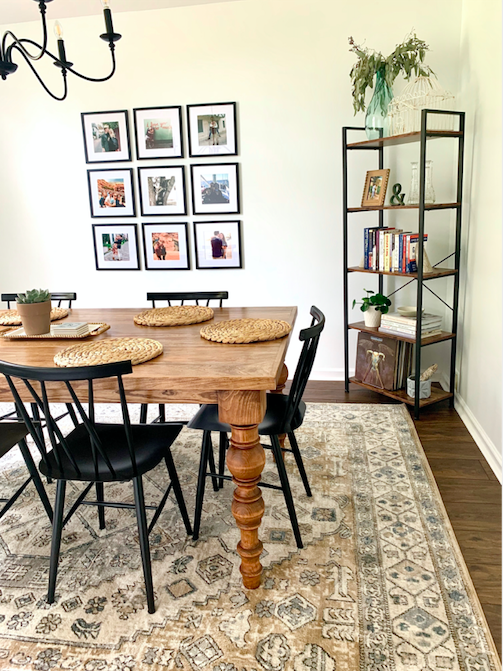How Dining Room Table Legs Can Change the Entire Aesthetic of Your Room
How Dining Room Table Legs Can Change the Entire Aesthetic of Your Room
Blog Article
Expert Tips for Installing Dining-room Table Legs for Optimum Stability
When it concerns mounting eating space table legs, achieving maximum stability is critical for both capability and visual appeals. The process starts with choosing the right products and hardware, adhered to by careful positioning and consideration of weight circulation. Each step plays a critical function in ensuring that the ended up product holds up against daily usage without jeopardizing safety or style honesty. Comprehending the subtleties of these elements can substantially influence the general end result. What particular strategies can enhance stability also further?
Choose the Right Legs
When choosing the ideal legs for your eating area table, it is vital to take into consideration both functionality and visual appeals. The legs you choose will significantly influence the overall layout and security of the table. Initially, evaluate the table's meant use; if you expect regular celebrations, tougher legs, such as those made from strong timber or steel, may be more appropriate, as they use boosted durability and support.
Conventional dining tables typically vary from 28 to 30 inches in elevation, so guarantee the legs straighten with this standard for convenience. Tapered legs can add a modern touch, while turned legs could communicate a more timeless aesthetic.

Select Appropriate Equipment
How can the best hardware enhance the stability and long life of your dining-room table? The option of appropriate hardware is crucial to making certain that the legs of your table are securely attached and able to withstand routine usage. High-quality screws, bolts, and braces give the necessary stamina to sustain the weight of the table, along with any extra tons positioned upon it throughout gatherings or meals.
When selecting screws, choose those made from sturdy materials such as stainless steel or brass, which withstand rust and keep honesty with time. The size of the screws is equally important; they ought to permeate deeply into the table's structure without jeopardizing stability. For bolted connections, think about utilizing lock washers to stop loosening up as a result of resonance or activity.
Furthermore, utilizing corner braces can include additional assistance, specifically for larger tables or those with heavier tops. These braces disperse weight uniformly and help keep the table's shape. Ensuring that the equipment you choose is suitable for the specific products of your table will additionally boost its overall security and durability, allowing you to appreciate your dining experience for years ahead.
Ensure Correct Positioning
Proper placement of dining area table legs is crucial for both aesthetic appeal and functional security. Misaligned legs can result in an uneven table top, which may not just be aesthetically unattractive but likewise compromise the table's functionality. To achieve optimum alignment, start by measuring the range from the table's edges to the leg accessory factors. This guarantees that each leg is located equidistant from the edges, developing a balanced look.
Use a degree throughout installment to verify that each leg is vertical to the table top. This step is critical, as even minor disparities can intensify right into significant security problems gradually. It is advisable to note the preferred leg placements on the bottom of the table with a pencil or concealing tape prior to safeguarding them. This practice serves as a visual guide, enabling changes as required.
In addition, ascertain the placement after the first screws are tightened up, as modifications may be needed prior to completely protecting the best site hardware. By prioritizing proper alignment, you not only enhance the table's total layout yet additionally make certain that it stays practical and stable for years to come.

Take Into Consideration Weight Circulation
After guaranteeing proper placement of the dining-room table legs, it is essential to consider weight circulation to boost stability and performance. dining room table legs. Appropriate weight distribution is crucial in protecting against making certain and wobbling that the table can sustain its desired lots without risk of tipping or falling down
When positioning the legs, guarantee they are placed at equivalent distances from the center of the table to equally distribute the weight throughout the structure. Think about the weight of i loved this the tabletop and any type of things that will often hinge on it, such as tabletop home appliances or decorative pieces. Tables with larger surfaces ought to preferably have legs located closer to the corners, as this maximizes the base of support and decreases the risk of instability.
Furthermore, if the table is planned for use in a high-traffic area, take into consideration using heavier products for the legs or including stabilizing elements, such as cross-bracing or a lower rack - dining room table legs. These adjustments can help preserve equilibrium and protect against shifting during use. Inevitably, a well-considered weight circulation strategy will considerably improve the table's total efficiency, guaranteeing it continues to be a functional and appealing centerpiece for your dining space
Examination Security Prior To Usage
Testing the stability of the dining space table before use is a critical step that should not be neglected. Making sure that the table is safe and secure can protect against crashes and lengthen the life-span of the furnishings. Begin by using mild pressure to different points on the table surface. Push down on the facility and afterwards along the sides, changing or observing any kind of wobbling. If the table reveals instability, determine the legs or joints that may require adjustment.
Next, examine that all fasteners and screws are tightened up appropriately. Loose connections can bring about instability and possible damage over time. If essential, utilize wood adhesive on joints to published here improve stability, ensuring to enable appropriate drying out time.

Conclusion
To conclude, the installment of dining-room table legs calls for careful consideration of products, equipment, weight, and placement circulation to attain maximum stability. By choosing high-grade fasteners and durable legs, making sure specific alignment, and distributing weight uniformly, the architectural integrity of the table can be considerably improved. Performing a security examination before normal usage better ensures that the table will withstand everyday stress, therefore giving a dependable and safe dining experience.
When it comes to installing dining room table legs, achieving maximum stability is paramount for both functionality and visual appeals. The legs you choose will considerably impact the overall design and security of the table (dining room table legs). Typical eating tables normally vary from 28 to 30 inches in height, so ensure the legs align with this requirement for comfort.Proper placement of eating space table legs is vital for both aesthetic appeal and useful stability.In conclusion, the installation of eating space table legs requires mindful factor to consider of materials, weight, alignment, and equipment distribution to achieve optimum stability
Report this page